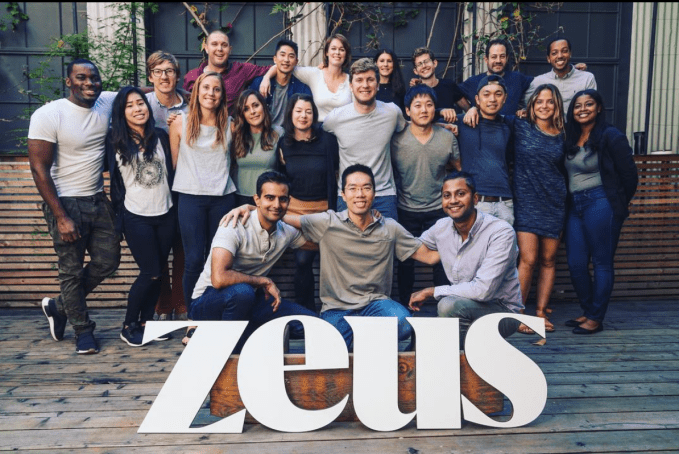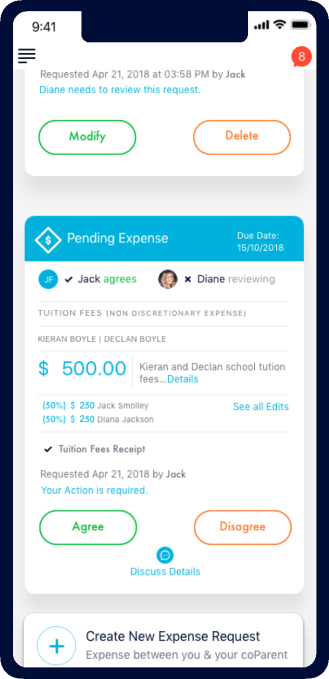U.S. federal court jury finds Apple infringed three Qualcomm patents
Mobile chipmaker Qualcomm has chalked up another small legal victory against Apple in another patent litigation suit.
A jury in a U.S. federal court in San Diego found Friday that Apple owes Qualcomm about $31M for infringing three patents, per Reuters.
As we reported earlier the San Diego patent suit relates to the power consumption and speed of boot-up times for iPhones sold between mid-2017 and late-2018.
Qualcomm had asked to be awarded up to $1.41 in unpaid patent royalties damages per infringing iPhone sold during the period.
The chipmaker has filed a number of patent suits against the iPhone maker in the U.S., Europe and Asia in recent years. The suits are skirmishes in a bigger battle between the pair over licensing terms that Apple alleges are unfair and illegal.
In a statement on on the San Diego trial outcome Qualcomm executive vice president and general counsel, Don Rosenberg, said:
Today’s unanimous jury verdict is the latest victory in our worldwide patent litigation directed at holding Apple accountable for using our valuable technologies without paying for them. The technologies invented by Qualcomm and others are what made it possible for Apple to enter the market and become so successful so quickly. The three patents found to be infringed in this case represent just a small fraction of Qualcomm’s valuable portfolio of tens of thousands of patents. We are gratified that courts all over the world are rejecting Apple’s strategy of refusing to pay for the use of our IP.
The iPhone models involved in the patent suit are iPhone 7, 7 Plus, 8, 8 Plus and X, which were found to infringe two Qualcomm patents, U.S. Patent No. 8,838,949 (“flashless booting”), and U.S. Patent No. 9,535,490 (data management between the applications processor and the modem); and the iPhone 8, 8 Plus and X which were found to infringe Qualcomm’s U.S. Patent No. 8,633,936 (high performance rich visual graphics with power management).
The patents are not contained in modems and are not standards-essential to cellular devices, Qualcomm said.
Reuters suggests the jury’s damages award could have wider significance if it ends up being factored into the looming billion dollar royalties suit between Apple and Qualcomm — by putting a dollar value on some of the latter’s IP, the San Diego trial potentially bolsters its contention that its chip licensing practices are fair, it said.
At the time of writing it’s not clear whether Apple intends to appeal the outcome of the trial. Reuters reports the iPhone maker declined to comment on that point, after expressing general disappointment with the outcome.
We’ve reached out to Apple for comment.
In a statement provided to the news agency Apple said: “Qualcomm’s ongoing campaign of patent infringement claims is nothing more than an attempt to distract from the larger issues they face with investigations into their business practices in U.S. federal court, and around the world.”
Cupertino filed its billion dollar royalties suit against Qualcomm two years ago.
It has reason to be bullish going into the trial, given a preliminary ruling Thursday — in which a U.S. federal court judge found Qualcomm owes Apple nearly $1BN in patent royalty rebate payments (via CNBC). The trial itself kicks off next month.
The U.S. Federal Trade Commission also filed antitrust charges against Qualcomm in 2017 — accusing the chipmaker of operating a monopoly and forcing exclusivity from Apple while charging “excessive” licensing fees for standards-essential patents.
That trial wrapped up in January and is pending a verdict from Judge Lucy Koh.
At the same time, Qualcomm has also been pursuing several international patent suits against Apple — also with some success.
In December Apple filed an appeal in China to overturn a preliminary ruling that could have blocked iPhone sales in the market.
While in Germany it did pull older iPhone models from sale in its own stores in January. But by February it was selling the two models again — albeit with Qualcomm chips, rather than Intel, inside.
This report was updated with comment from Qualcomm
Powered by WPeMatico
No Man’s Sky has a big new update due out this summer
After a conspicuous stretch of silence ending with a mysterious teaser tweet on Thursday, No Man’s Sky creator Sean Murray revealed that another major free update is on the way. The new content, which is the first since last year’s Visions update, will hit the massive space exploration game this summer.
The bundle of new content, called No Man’s Sky “Beyond,” will tie together three different updates, though Murray is only giving up the details of one so far. The one we know about is something that Murray is calling “No Man’s Sky Online” which “includes a radical new social and multiplayer experience which empowers players everywhere in the universe to meet and play together” and weaves together three standalone updates into “a vision for something much more impactful.”
No Man’s Sky BEYOND, a major free chapter, coming Summer 2019.
With three updates in one:
1) No Man’s Sky Online
2) ?
3) ?We’re working out butts off on something special
More Info soonhttps://t.co/YtKimYyj6U pic.twitter.com/Txi8orUIs9
— Sean Murray (@NoMansSky) March 15, 2019
The short preview video doesn’t reveal much, but it shows a ship we haven’t seen before in what looks like either a reimagined space station (that would be nice!) or some kind of brand new multiplayer hub area.
Murray emphasized that the multiplayer update wouldn’t add things from other major multiplayer games like microtransactions or subscriptions and that he has no intention of turning No Man’s Sky into an MMO. (Still, if a lot of people are playing online together in a massive world, isn’t it uh, kind of an MMO?) The blog post noted that the team would release more details on the other two big pieces of new content in the coming weeks.
“These changes are an answer to how we have seen people playing since the release of NEXT, and is something we’ve dreamed of for a long time,” Murray added.
After a very rough launch and its accompanying critical lambasting in 2016, No Man’s Sky’s team has consistently added huge free content updates to the game. That dedication to building out the world the development team initially promised has brought “millions” of new players into the fold and inspired a thriving online and in-game community.
That community will be happy to hear that according to his latest blog post, Murray doesn’t intend to walk away from the game any time soon.
Powered by WPeMatico
What to watch for in a VC term sheet
Contributor
When startup founders review a VC term sheet, they are mostly only interested in the pre-money valuation and the board composition. They assume the rest of the language is “standard” and they don’t want to ruffle any feathers with their new VC partner by “nickel and diming the details.” But these details do matter.
VCs are savvy and experienced negotiators, and all of the language included in the term sheet is there because it is important to them. In the vast majority of cases, every benefit and protection a VC gets in a term sheet comes with some sort of loss or sacrifice on the part of the founders – either in transferring some control away from the founders to the VC, shifting risk from the VC to the founders, or providing economic benefits to the VC and away from the founders. And you probably have more leverage to get better terms than you may think. We are in an era of record levels of capital flowing into the venture industry and more and more firms targeting seed stage companies. This competition makes it harder for VCs to dictate terms the way they used to.
But like any negotiating partner, a VC will likely be evaluating how savvy you appear to be in approaching a proposed term sheet when deciding how hard they are going to push on terms. If the VC sees you as naïve or green, they can easily take advantage of that in negotiating beneficial terms for themselves. So what really matters when you are negotiating a term sheet? As a founder, you want to come out of the financing with as much overall control of the company and flexibility in shaping the future of the company as possible and as much of a share in the future economic prosperity of the company as possible. With these principles in mind, let’s take a look at four specific issues in a term sheet that are often overlooked by founders and company counsel:
- What counts in pre-money capitalization
- The CEO common director
- Drag-along provisions
- Liquidation preference.
What counts in pre-money capitalization
Powered by WPeMatico
Zeus raises $24M to make you a living-as-a-service landlord
Cookie-cutter corporate housing turns people into worker drones. When an employee needs to move to a new city for a few months, they’re either stuck in bland, giant apartment complexes or Airbnbs meant for shorter stays. But Zeus lets any homeowner get paid to host white-collar transient labor. Through its managed ownership model, Zeus takes on all the furnishing, upkeep, and risk of filling the home while its landlords sit back earning cash.
Zeus has quietly risen to a $45 million revenue run rate from renting out 900 homes in 23 cities. That’s up 5X in a year thanks to Zeus’ 150 employees. With a 90 percent occupancy rate, it’s proven employers and their talent want more unique, trustworthy, well-equipped multi-month residences that actually make them feel at home.
Now while Airbnb is distracted with its upcoming IPO, Zeus has raised $24 million to steal the corporate housing market. That includes a previous $2.5 million seed round from Bowery, the new $11.5 million Series A led by Initialized Capital whose partner Garry Tan has joined Zeus’ board, and $10 million in debt to pay fixed costs like furniture. The plan is to roll up more homes, build better landlord portal software, and hammer out partnerships or in-house divisions for cleaning and furnishing.

“In the first decade out of school people used to have two jobs. Now it’s four jobs and it’s trending to five” says Zeus co-founder and CEO Kulveer Taggar. “We think in 10 years, these people won’t be buying furniture.” He imagines they’ll pay a premium for hand-holding in housing, which judging by the explosion in popularity of zero-friction on-demand services, seems like an accurate assessment of our lazy future. Meanwhile, Zeus aims to be “the quantum leap improvement in the experience of trying to rent out your home” where you just punch in your address plus some details and you’re cashing checks 10 days later.
Buying Mom A House Was Step 1
“When I sold my first startup, I bought a home for my mom in Vancouver” Taggar recalls. It was payback for when she let him remortgage her old house while he was in college to buy a condo in Mumbai he’d rent out to earn money. “Despite not having much growing up, my mom was a travel agent and we got to travel a lot” which Taggar says inspired his goal to live nomadically in homes around the world. Zeus could let other live that dream.

Zeus co-founder and CEO Kulveer Taggar
After Oxford and working as an analyst at Deutsche Bank, Taggar built student marketplace Boso before moving to the United States. There, he co-founded auction tool Auctomatic with his cousin Harjeet Taggar and future Stripe co-founder Patrick Collison, went through Y Combinator, and sold it to Live Current Media for $5 million just 10 months later. That gave him the runway to gift a home to his mom and start tinkering on new ideas.
With Y Combinator’s backing again, Taggar started NFC-triggered task launcher Tagstand, which pivoted into app settings configurer Agent, which pivoted into automatic location sharing app Status. But when his co-founder Joe Wong had to move an hour south from San Francisco to Palo Alto, Taggar was dumbfounded by how distracting the process was. Listing and securing a new tenant was difficult, as was finding a medium-term rental without having to deal with exhorbitant prices or sketchy Cragislist. Having seen his former co-founder go on to great success with Stripe’s dead-simple payments integration, Taggar wanted to combine that vision with OpenDoor’s easy home sales to making renting or renting out a place instantaneous. That spawned Zeus.
Stripe Meets OpenDoor To Beat Airbnb
To become a Zeus landlord, you just type in your address, how many bedrooms and bathrooms, and some aesthetic specs, and you get a monthly price quote for what you’ll be paid. Zeus comes in and does a 250-point quality assessment, collects floor plans, furnishes the property, and handles cleaning and maintenance. It works with partners like Helix mattresses, Parachute sheets, and Simple Human trash cans to get bulk rates. “We raised debt because we had these fixed investments into furniture. It’s not as dilutive as selling pure equity” Taggar explains.
Zeus quickly finds a tenant thanks to listings in Airbnb and relationships with employers like Darktrace and ZS Associates with lots of employees moving around. After passing background checks, tenants get digital lock codes and access to 24/7 support in case something doesn’t look right. The goal is to get someone sleeping there in just 10 days. “Traditional corporate housing is $10,000 a month in SF in the summer or at extended stay hotels. Airbnb isn’t well suited [for multi-month stays]. ” Taggar claims. “We’re about half the price of traditional corporate housing for a better product and a better experience.”

Zeus signs minimum two-year leases with landlords and tries to extend them to five years when possible. It gets one free month of rent as is standard for property managers, but doesn’t charge an additional rate. For example, Zeus might lease your home for $4,000 per month but gets the first month free, and rent it out for $5,000 so it earns $60,000 but pays you $44,000. That’s a tidy margin if Zeus can get homes filled fast and hold down its upkeep costs.
“Zeus has been instrumental for my company to start the process of re-location to the Bay Area and to host our visiting employees from abroad now that we are settled” writes Zeus client Meitre’s Luis Caviglia. “I particularly like the ‘hard truths’ featured in every property, and the support we have received when issues arose during our stays.”
At Home, Anywhere
There’s no shortage of competitors chasing this $18 billion market in the US alone. There are the old-school corporations and chains like Oakwood and Barbary Coast that typically rent out apartments from vast, generic complexes at steep rates. Stays over 30 days made up 15 percent of Airbnb’s business last year, but the platform wasn’t designed for peace-of-mind around long-term stays. There are pure marketplaces like UrbanDoor that don’t always take care of everything for the landlord or provide consistent tenant experiences. And then there are direct competitors like $130 million-funded Sonder, $66 million-funded Domio, recently GV-backed 2nd Address, and European entants like MagicStay, AtHomeHotel, and Homelike.

Zeus’ property unit growth
There’s plenty of pie, though. With 330,000 housing units in SF alone, Zeus has plenty of room to grow. The rise of remote work means companies whose employee typically didn’t relocate may now need to bring in distant workers for a multi-month sprint. A recession could make companies more expense-cautious, leading them to rethink putting up staffers in hotels for months on end. Regulatory red tape and taxes could scare landlords away from short-term rentals and towards coprorate housing. And the need to expand into new businesses could tempt the big vacation rental platforms like Airbnb to make acquisitions in the space — or try to crush Zeus.
Winners will be determined in part by who has the widest and cheapest selection of properties, but also by which makes people most comfortable in a new city. That’s why Taggar is taking a cue from WeWork by trying to arrange more community events for its tenants. Often in need of friends, Zeus could become a favorite by helping people feel part of a neighborhood rather than a faceless inmate in a massive apartment block or hotel. That gives Zeus network effect if it can develop density in top markets.

Taggar says the biggest challenge is that “I feels like I’m running five startups at once. Pricing, supply chain, customer service, B2B. We’ve decided to make everything custom — our own property manager software, our own internal CRM. We think these advantages compound, but I could be wrong and they could be wasted effort.”
The benefits of Zeus‘ success would go beyond the founder’s bank account. “I’ve had friends in New York get great opportuntiies in San Francisco but not take them because of the friction of moving” Taggar says. Routing talent where it belongs could get more things built. And easy housing might make people more apt to live abroad temporarily. Taggar concludes, “I think it’s a great way to build empathy.”
Powered by WPeMatico
Suse is once again an independent company
Open-source infrastructure and application delivery vendor Suse — the company behind one of the oldest Linux distributions — today announced that it is once again an independent company. The company today finalized its $2.5 billion acquisition by growth investor EQT from Micro Focus, which itself had acquired it back in 2014.
Few companies have changed hands as often as Suse and yet remained strong players in their business. Suse was first acquired by Novell in 2004. Novell was then acquired by Attachmate in 2010, which Micro Focus acquired in 2014. The company then turned Suse into an independent division, only to then announce its sale to EQT in the middle of 2018.
It took a while for Micro Focus and EQT to finalize the acquisition, though, but now, for the first time since 2004, Suse stands on its own.
Micro Focus says that when it acquired Attachmate Group for $2.35 billion, Suse generated just 20 percent of the group’s total revenues. Since then, Suse has generated quite a bit more business as it expanded its product portfolio well beyond its core Linux offerings and into the more lucrative open-source infrastructure and application delivery business by, among other things, offering products and support around massive open-source projects like Cloud Foundry, OpenStack and Kubernetes.
 Suse CEO Nils Brauckmann will remain at the helm of the company, but the company is shaking up its executive ranks a bit. Enrica Angelone, for example, has been named to the new post of CFO at Suse, and Sander Huyts is now the company’s COO. Former Suse CTO Thomas Di Giacomo is now president of Engineering, Product and Innovation. All three report directly to Brauckmann.
Suse CEO Nils Brauckmann will remain at the helm of the company, but the company is shaking up its executive ranks a bit. Enrica Angelone, for example, has been named to the new post of CFO at Suse, and Sander Huyts is now the company’s COO. Former Suse CTO Thomas Di Giacomo is now president of Engineering, Product and Innovation. All three report directly to Brauckmann.
“Our genuinely open, open source solutions, flexible business practices, lack of enforced vendor lock-in and exceptional service are more critical to customer and partner organizations, and our independence coincides with our single-minded focus on delivering what is best for them,” said Brauckmann in today’s announcement. “Our ability to consistently meet these market demands creates a cycle of success, momentum and growth that allows SUSE to continue to deliver the innovation customers need to achieve their digital transformation goals and realize the hybrid and multi-cloud workload management they require to power their own continuous innovation, competitiveness and growth.”
Since IBM recently bought Red Hat for $34 billion, though, it remains to be seen how long Suse’s independent future will last. The market for open source is only heating up, after all.
Powered by WPeMatico
CoParenter helps divorced parents settle disputes using AI and human mediation
A former judge and family law educator has teamed up with tech entrepreneurs to launch an app they hope will help divorced parents better manage their co-parenting disputes, communications, shared calendar and other decisions within a single platform. The app, called coParenter, aims to be more comprehensive than its competitors, while also leveraging a combination of AI technology and on-demand human interaction to help co-parents navigate high-conflict situations.
The idea for coParenter emerged from co-founder Hon. Sherrill A. Ellsworth’s personal experience and entrepreneur Jonathan Verk, who had been through a divorce himself.
Ellsworth had been a presiding judge of the Superior Court in Riverside County, California for 20 years and a family law educator for 10. During this time, she saw firsthand how families were destroyed by today’s legal system.
“I witnessed countless families torn apart as they slogged through the family law system. I saw how families would battle over the simplest of disagreements like where their child will go to school, what doctor they should see and what their diet should be — all matters that belong at home, not in a courtroom,” she says.

Ellsworth also notes that 80 percent of the disagreements presented in the courtroom didn’t even require legal intervention — but most of the cases she presided over involved parents asking the judge to make the co-parenting decision.
As she came to the end of her career, she began to realize the legal system just wasn’t built for these sorts of situations.
She then met Jonathan Verk, previously EVP Strategic Partnerships at Shazam and now coParenter CEO. Verk had just divorced and had an idea about how technology could help make the co-parenting process easier. He already had on board his longtime friend and serial entrepreneur Eric Weiss, now COO, to help build the system. But he needed someone with legal expertise.
That’s how coParenter was born.
The app, also built by CTO Niels Hansen, today exists alongside a whole host of other tools built for different aspects of the co-parenting process.
That includes those apps designed to document communication, like OurFamilyWizard, Talking Parents, AppClose and Divvito Messenger; those for sharing calendars, like Custody Connection, Custody X Exchange and Alimentor; and even those that offer a combination of features like WeParent, 2houses, SmartCoparent and Fayr, among others.

But the team at coParenter argues that their app covers all aspects of co-parenting, including communication, documentation, calendar and schedule sharing, location-based tools for pickup and drop-off logging, expense tracking and reimbursements, schedule change requests, tools for making decisions on day-to-day parenting choices like haircuts, diet, allowance, use of media, etc. and more.
Notably, coParenter also offers a “solo mode” — meaning you can use the app even if the other co-parent refuses to do the same. This is a key feature that many rival apps lack.

However, the biggest differentiator is how coParenter puts a mediator of sorts in your pocket.
The app begins by using AI, machine learning and sentiment analysis technology to keep conversations civil. The tech will jump in to flag curse words, inflammatory phrases and offensive names to keep a heated conversation from escalating — much like a human mediator would do when trying to calm two warring parties.
When conversations take a bad turn, the app will pop up a warning message that asks the parent if they’re sure they want to use that term, allowing them time to pause and think. (If only social media platforms had built features like this!)

When parents need more assistance, they can opt to use the app instead of turning to lawyers.
The company offers on-demand access to professionals as both monthly ($12.99/mo – 20 credits, or enough for two mediations) or yearly ($119.99/year – 240 credits) subscriptions. Both parents can subscribe for $199.99/year, each receiving 240 credits.
“Comparatively, an average hour with a lawyer costs between $250 and upwards of $500, just to file a single motion,” Ellsworth says.
These professionals are not mediators, but are licensed in their respective fields — typically family law attorneys, therapists, social workers or other retired bench officers with strong conflict resolution backgrounds. Ellsworth oversees the professionals to ensure they have the proper guidance.

All communication between the parent and the professional is considered confidential and not subject to admission as evidence, as the goal is to stay out of the courts. However, all the history and documentation elsewhere in the app can be used in court, if the parents do end up there.
The app has been in beta for nearly a year, and officially launched this January. To date, coParenter claims it has already helped to resolve more than 4,000 disputes and more than 2,000 co-parents have used it for scheduling. Indeed, 81 percent of the disputing parents resolved all their issues in the app, without needing a professional mediator or legal professional, the company says.
CoParenter is available on both iOS and Android.
Powered by WPeMatico
‘Ape Out’ and ‘Baba Is You’ demonstrate the depth of simplicity
The games we see advertised the most aren’t necessarily the best representatives for what has become an incredibly diverse medium. Yearly AAA installments and massive open worlds are all well and good, but simplicity is rarely on display — which makes two recent releases, Ape Out and Baba Is You, all the more delightful.
Both are, in a way, very simple games, but from that simplicity arises complex and enjoyable gameplay concepts that can entertain (or frustrate) for hours. It’s a refreshing reversal of games that appear complex but ultimately have very little depth.
Ape Out is certainly the more simple of the two, at least in gameplay terms. You’re an ape — a great ape. A gorilla, to be precise. And you have gotten out.
The smooth top-down action has you navigating a procedurally generated office patrolled by gun-wielding ne’er-do-wells. To prevent further ape blood from being spilled, you can either punch them — usually fatal, as you are strong — or grab them, which causes them to fire their gun. Then you can throw them into a wall. That’s pretty much it!
A few things elevate the game beyond the apparently arcade-level concepts here. First is a distinctive visual style that combines a sort of watercolor or chalky effect with starkly monochrome characters and surroundings, making gameplay elements highly distinctive and recognizable while giving a definite look to the whole world.
The controls are also smooth and largely predictable, letting you confidently move through the world without worrying whether you’ll catch on something or whether your lunge will reach a guy — if you’re not sure, it’s exciting rather than frustrating. Well-spaced checkpoints make you master an area before passing on, but don’t feel punitive, and new enemies and obstacles are introduced gradually and logically.
But the music is the most striking bit. A base beat of jazz drums accompanies each stage, growing in intensity as you progress to the next level (it can take as little as 20 or 30 seconds to do so), and every action adds a beat or cymbal crash to the mix. The responsive music makes it feel like a real soundtrack to your acts, while also spurring you on to greater ones.
As Penny Arcade pointed out, Ape Out is fun and original from the moment you pick it up. There’s no boring tutorial, problematic dialogue, poorly characterized protagonist, obscure and frequently revised gameplay elements, and no “ludonarrative dissonance.” In other words you never think “wait, would an enraged ape really do that?” (By the way, it’s definitely violent — but in an absurd comic style, not graphic and horrible.)
Baba Is You is simple in a different way. Its graphics and simple grid-based movement place it in company with The Adventures of Lolo or similar block-pushing games from the ’80s and ’90s. The complexity of this game, however, comes from a mind-bending twist along the lines of Portal and The Witness: the rules of the game are actual blocks that you move around as well.
It sounds weird, but that’s the game: In addition to rocks, water, walls and various other items, there are blocks defining the actual rules of that level with a crude, blocky logic, such as “flag is win” and “rock is push,” meaning you win if you touch the flag and rocks can be pushed.
Perhaps the flag is embedded in an inaccessible fortress of walls, though. No problem. A couple pushes mean that now “rock is win” — so just go touch a rock and the level is complete. Or perhaps if you can reach it, the rule “wall is stop” can be shifted, letting you walk right through them to the flag.
 The simple, cute graphics let you focus on the seemingly limited, yet actually maddeningly diverse, ways of combining and shifting the blocks of the level. “Eureka!” moments are elusive things, as the creator seems to have a knack for predicting how you might think and putting roadblocks in the way of obvious solutions. But there is that amazing feeling that you’re a genius when you come back to an “impossible” level and see it with new eyes, solving it in a handful of seconds. That’s the complexity of simplicity — a single breakthrough that takes half an hour to arrive at.
The simple, cute graphics let you focus on the seemingly limited, yet actually maddeningly diverse, ways of combining and shifting the blocks of the level. “Eureka!” moments are elusive things, as the creator seems to have a knack for predicting how you might think and putting roadblocks in the way of obvious solutions. But there is that amazing feeling that you’re a genius when you come back to an “impossible” level and see it with new eyes, solving it in a handful of seconds. That’s the complexity of simplicity — a single breakthrough that takes half an hour to arrive at.
I won’t lie, though: Baba Is You is hard. It’s hard as hell. In the forums are puzzle fiends shame-facedly admitting they can’t beat the 6th level, or facepalming after a hint is offered. It’s easy to develop a mental block and never get past it — but fortunately the game is fairly open, letting you take on the first few puzzles of various themed areas of the map rather than making you clear one before moving on to the next. This isn’t a game you’ll be done with in an afternoon.
Both Baba Is You and Ape Out cost less than $20 (on PC and Switch right now), in the sweet spot between the shovelware under $10 and “full” retail games twice the cost. Both are unique and created with obvious care and attention to detail. And neither ever requires more than two or three minutes of your time — though you can, as I did last night, lose hours just as easily as you would in a AAA title. This is simple done right.
Powered by WPeMatico
YourChoice Therapeutics is developing unisex, non-hormonal birth control
The options available to women who want to avoid getting pregnant today are bad. Most, like the widely used birth control pill, feed man-made estrogen and progestin hormones to women, which are capable of causing a number of awful side effects.
YourChoice Therapeutics — a startup launched by a team of Berkeley researchers, including two experts in sperm physiology and sperm-egg interactions — dreams of producing a unisex, non-hormonal alternative to existing contraceptives. The company has raised $400,000 in funding to date, plus a $150,000 check from Y Combinator. YourChoice will make its big pitch at Y Combinator Demo Days next week.
It’s seeking $2 million in venture capital funding to continue research on its sperm cell-targeting novel method of contraception, as well as to build out its team of chemists. Founders Akash Bakshi and Nadja Mannowetz tell TechCrunch they plan to have a contraceptive ready to market by 2025. Together, with co-founder and advisor Dr. Polina V. Lishko of Berkeley’s department of cell and molecular biology, they hope to reach women and men all over the world, in the process tapping a market expected to be worth $37 billion by 2023.
“There are perhaps ways that we could cut that time in half or just get something to market,” said Bakshi, YourChoice’s chief executive officer, whose background is in technology commercialization, research and development within the life sciences industry. “But we need to do this right so that we can benefit as many women as possible.”
Their first product will be a vaginal contraceptive to be applied before intercourse, then, the startup plans to release oral contraceptives for both genders. The team has discovered that the natural compound lupeol is capable of blocking a protein on sperm that is required for fertilization. YourChoice‘s non-hormonal approach doesn’t impact a cells’ ability to function or gene expression, so women and men are not at an increased risk of blood clots, cancer or other side effects associated with mainstream birth control methods’ use of added hormones.
“The bottom line is men don’t have good options and women apparently have so many choices, yet they are all really bad,” Mannowetz, a Ph.D. in sperm physiology, told TechCrunch. “They’re all based on that over 60-year-old idea of hormone-based drugs.”
YourChoice’s planned debut product will be applied directly in the vagina during the period of the month in which the woman is fertile. Whether that be a tablet, a gel or some other form factor is still up in the air. YourChoice’s second product will be an oral contraceptive because they believe that is the most convenient, universally accepted method.
“For women who have an implant … I understand that this might be a step backward, but women who have been on the pill for decades, for them, it wouldn’t be a big change,” Mannowetz said. “We totally understand we will not serve every woman out there but we need to get started with a product and then take it from there.”
“If the last 60 years have taught us anything, it’s that delivery is something that can continue to be developed,” she continued. “We need to develop a new mode of action.”
There are a number of startups innovating in the contraception space, as TechCrunch has written, though most of those businesses are focused on the access problem. Birth control can be very difficult for many to access and startups like The Pill Club or Nurx solve that problem by delivering the pill directly to women’s doorsteps. Other early-stage companies in the space lack experts in the field of reproductive biology necessary to improve contraceptive options. YourChoice’s team says seeking change to the actual medication with an advanced team sets them apart from other upstarts.
For YourChoice, it helps that venture capital investment in the reproductive tech space is increasing, making this a great time for YC to support these businesses (YourChoice isn’t the only reproductive tech startup in the latest YC cohort) and for YourChoice to successfully nab private investment.
“I personally think the industry is satisfied; they are making really good money, right? So why should they change anything,” Mannowetz said. “Millennials are the starting point of change happening. I think now, women stand up and say, ‘we are sick of it.’ ”
Powered by WPeMatico
Turtle Beach is buying fellow gaming accessory maker Roccat
There was a nice surprise morsel for those following Turtle Beach’s financials this week. In addition to a “record fourth quarter,” the headset maker announced that it has agreed to purchase fellow gaming peripheral company Roccat for $14.8 million in cash.
Turtle Beach is best known for creating gaming headsets for a wide range of different consoles, PCs and mobile devices. Picking up Germany-based Roccat will help the San Diego company further expand into additional peripherals like mice and keyboards. Turtle Beach is also hoping it will help expand its primarily U.S. and Europe-based sales into Asia, where Roccat has already made a dent.
In a press release tied to the news, Turtle Beach CEO Juergen Stark calls the deal “a key step in achieving our goal of building a $100 million PC gaming accessories business in the coming years.”
The complementary nature of the two companies’ product portfolios should certainly go a ways toward helping expand Turtle Beach’s brand. No word, however, on whether the company will continue to maintain the Roccat line in those markets where it’s already found some traction. Certainly that would make a lot of sense in the short term.
Turtle Beach expects the deal to close in Q2.
Powered by WPeMatico
Apple ad focuses on iPhone’s most marketable feature — privacy
Apple is airing a new ad spot in primetime today. Focused on privacy, the spot is visually cued, with no dialog and a simple tagline: Privacy. That’s iPhone.
In a series of humorous vignettes, the message is driven home that sometimes you just want a little privacy. The spot has only one line of text otherwise, and it’s in keeping with Apple’s messaging on privacy over the long and short term. “If privacy matters in your life, it should matter to the phone your life is on.”
The spot will air tonight in primetime in the U.S. and extend through March Madness. It will then air in select other countries.
You’d have to be hiding under a rock not to have noticed Apple positioning privacy as a differentiating factor between itself and other companies. Beginning a few years ago, CEO Tim Cook began taking more and more public stances on what the company felt to be your “rights” to privacy on their platform and how that differed from other companies. The undercurrent being that Apple was able to take this stance because its first-party business relies on a relatively direct relationship with customers who purchase its hardware and, increasingly, its services.
This stands in contrast to the model of other tech giants like Google or Facebook that insert an interstitial layer of monetization strategy on top of that relationship in the forms of application of personal information about you (in somewhat anonymized fashion) to sell their platform to advertisers that in turn can sell to you better.
Turning the ethical high ground into a marketing strategy is not without its pitfalls, though, as Apple has discovered recently with a (now patched) high-profile FaceTime bug that allowed people to turn your phone into a listening device, Facebook’s manipulation of App Store permissions and the revelation that there was some long overdue house cleaning needed in its Enterprise Certificate program.
I did find it interesting that the iconography of the “Private Side” spot very, very closely associates the concepts of privacy and security. They are separate, but interrelated, obviously. This spot says these are one and the same. It’s hard to enforce privacy without security, of course, but in the mind of the public I think there is very little difference between the two.
The App Store itself, of course, still hosts apps from Google and Facebook among thousands of others that use personal data of yours in one form or another. Apple’s argument is that it protects the data you give to your phone aggressively by processing on the device, collecting minimal data, disconnecting that data from the user as much as possible and giving users as transparent a control interface as possible. All true. All far, far better efforts than the competition.
Still, there is room to run, I feel, when it comes to Apple adjudicating what should be considered a societal norm when it comes to the use of personal data on its platform. If it’s going to be the absolute arbiter of what flies on the world’s most profitable application marketplace, it might as well use that power to get a little more feisty with the bigcos (and littlecos) that make their living on our data.
I mention the issues Apple has had above not as a dig, though some might be inclined to view Apple integrating privacy with marketing as boldness bordering on hubris. I, personally, think there’s still a major difference between a company that has situational loss of privacy while having a systemic dedication to privacy and, well, most of the rest of the ecosystem which exists because they operate an “invasion of privacy as a service” business.
Basically, I think stating privacy is your mission is still supportable, even if you have bugs. But attempting to ignore that you host the data platforms that thrive on it is a tasty bit of prestidigitation.
But that might be a little too verbose as a tagline.
Powered by WPeMatico


